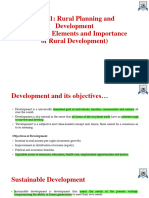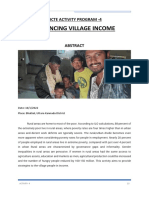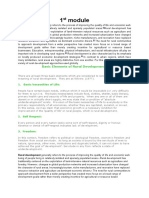0% found this document useful (0 votes)
49 views11 pagesRural Development by Zuby
Rural development aims to enhance the economic, social, and environmental conditions of rural areas through various strategies such as agricultural modernization, infrastructure development, and community empowerment. Key components include improving access to basic services, promoting economic diversification, and ensuring active community participation. The overall goal is to create sustainable and vibrant rural communities by addressing challenges and improving quality of life.
Uploaded by
Riaz javedCopyright
© © All Rights Reserved
We take content rights seriously. If you suspect this is your content, claim it here.
Available Formats
Download as DOCX, PDF, TXT or read online on Scribd
0% found this document useful (0 votes)
49 views11 pagesRural Development by Zuby
Rural development aims to enhance the economic, social, and environmental conditions of rural areas through various strategies such as agricultural modernization, infrastructure development, and community empowerment. Key components include improving access to basic services, promoting economic diversification, and ensuring active community participation. The overall goal is to create sustainable and vibrant rural communities by addressing challenges and improving quality of life.
Uploaded by
Riaz javedCopyright
© © All Rights Reserved
We take content rights seriously. If you suspect this is your content, claim it here.
Available Formats
Download as DOCX, PDF, TXT or read online on Scribd
/ 11
























































